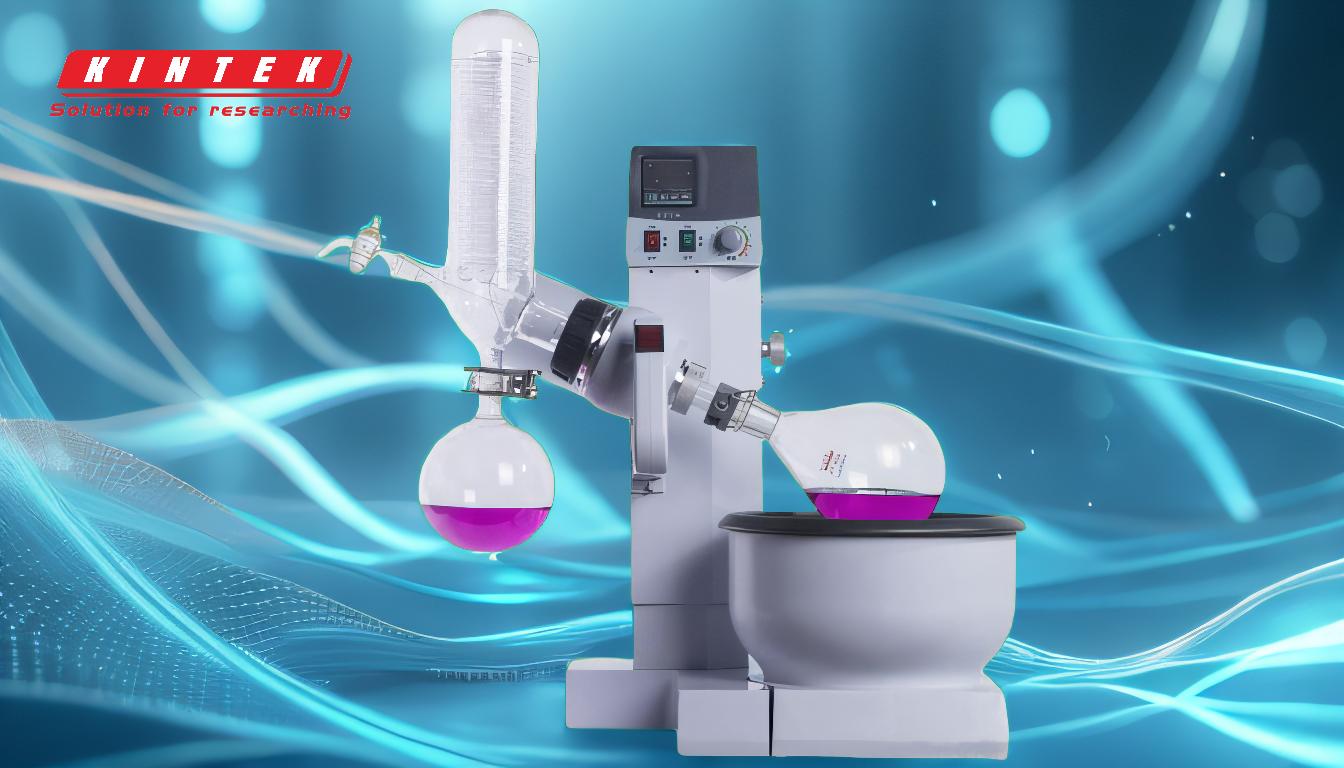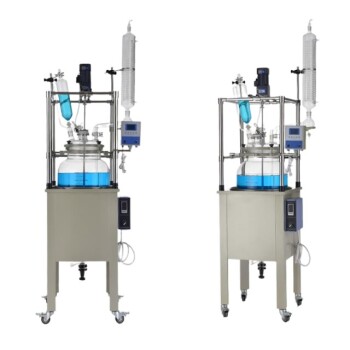Rotary evaporation (rotovap) time varies significantly depending on several factors, including the solvent type, equipment setup, and operational parameters. Generally, it can take anywhere from a few minutes to several hours. The process is influenced by factors such as the rotation speed, vacuum level, bath temperature, condenser efficiency, and the size of the evaporation flask. Optimizing these parameters is essential to achieve efficient evaporation while preserving the integrity of heat-sensitive samples. Below, we break down the key factors that influence rotovap time and provide insights into how to optimize the process.
Key Points Explained:

-
Solvent Type and Properties
- The boiling point and volatility of the solvent are primary determinants of evaporation time.
- Low-boiling solvents (e.g., acetone, ethanol) evaporate faster than high-boiling solvents (e.g., water, DMSO).
- Solvents with high vapor pressure will evaporate more quickly under vacuum.
- Implication for Purchasers: Ensure the rotovap system is compatible with the solvents you frequently use. For example, if working with high-boiling solvents, invest in a system with a powerful vacuum pump and efficient condenser.
- The boiling point and volatility of the solvent are primary determinants of evaporation time.
-
Vacuum Level
- The vacuum level directly impacts the evaporation rate by lowering the boiling point of the solvent.
- Higher vacuum levels reduce the boiling point, speeding up evaporation.
- However, excessive vacuum can cause bumping or foaming, which may damage the sample or equipment.
- Implication for Purchasers: Choose a vacuum pump with adjustable settings and sufficient power for your solvent range. Ensure the system has robust sealing components (e.g., PTFE seals) to maintain tightness.
- The vacuum level directly impacts the evaporation rate by lowering the boiling point of the solvent.
-
Bath Temperature
- The water or oil bath temperature provides the energy needed for evaporation.
- Higher bath temperatures increase the evaporation rate but may risk degrading heat-sensitive compounds.
- Lower temperatures are safer for sensitive samples but may prolong the process.
- Implication for Purchasers: Select a rotovap with precise temperature control to balance speed and sample integrity.
- The water or oil bath temperature provides the energy needed for evaporation.
-
Rotation Speed
- The rotation speed of the flask affects the surface area of the solvent exposed to heat and vacuum.
- Faster rotation increases the surface area, enhancing evaporation.
- Slower rotation is suitable for viscous or foaming solutions.
- Implication for Purchasers: Ensure the rotovap model offers adjustable rotation speeds to accommodate different sample types.
- The rotation speed of the flask affects the surface area of the solvent exposed to heat and vacuum.
-
Condenser Efficiency
- The condenser cools and recovers the evaporated solvent.
- Efficient condensers with low cooling water temperatures improve recovery rates and prevent solvent loss.
- Inefficient condensers may lead to solvent escaping into the vacuum pump, reducing yield and increasing downtime.
- Implication for Purchasers: Prioritize systems with high-performance condensers, especially for volatile solvents.
- The condenser cools and recovers the evaporated solvent.
-
Evaporation Flask Size
- The size of the evaporation flask affects the solvent volume and surface area.
- Larger flasks can handle more solvent but may require longer evaporation times due to reduced surface area-to-volume ratio.
- Smaller flasks are ideal for quick evaporation of small volumes.
- Implication for Purchasers: Choose a rotovap with interchangeable flask sizes to match your typical sample volumes.
- The size of the evaporation flask affects the solvent volume and surface area.
-
System Tightness and Vacuum Pump Performance
- A well-sealed system ensures consistent vacuum levels, which are critical for efficient evaporation.
- Leaks can reduce vacuum efficiency, prolonging the process.
- High-quality vacuum pumps and durable sealing materials (e.g., PTFE) enhance performance and longevity.
- Implication for Purchasers: Invest in a rotovap with high-quality sealing components and a reliable vacuum pump.
- A well-sealed system ensures consistent vacuum levels, which are critical for efficient evaporation.
-
Sample Characteristics
- The nature of the sample (e.g., viscosity, heat sensitivity) impacts evaporation time.
- Viscous samples may require slower rotation speeds or lower temperatures to prevent foaming.
- Heat-sensitive compounds need precise temperature control to avoid degradation.
- Implication for Purchasers: Ensure the rotovap system offers customizable settings to handle diverse sample types.
- The nature of the sample (e.g., viscosity, heat sensitivity) impacts evaporation time.
-
Operational Best Practices
- Follow manufacturer guidelines for optimal settings and maintenance.
- Gradually increase vacuum levels and bath temperatures to avoid bumping or foaming.
- Regularly clean and inspect the system to maintain performance.
- Implication for Purchasers: Training and adherence to best practices can significantly improve efficiency and equipment lifespan.
By understanding and optimizing these factors, users can significantly reduce rotovap time while maintaining sample integrity. For purchasers, selecting a rotovap system with adjustable parameters, high-quality components, and compatibility with your specific needs is crucial for achieving efficient and reliable evaporation.
Summary Table:
| Factor | Impact on Rotovap Time | Purchaser Implication |
|---|---|---|
| Solvent Type | Low-boiling solvents evaporate faster; high-boiling solvents take longer. | Choose a rotovap compatible with your solvents, especially for high-boiling types. |
| Vacuum Level | Higher vacuum speeds up evaporation but excessive vacuum can cause bumping. | Invest in an adjustable vacuum pump with robust sealing components. |
| Bath Temperature | Higher temperatures speed up evaporation but risk sample degradation. | Select a rotovap with precise temperature control. |
| Rotation Speed | Faster rotation increases evaporation rate; slower rotation suits viscous samples. | Ensure the rotovap offers adjustable rotation speeds. |
| Condenser Efficiency | Efficient condensers improve recovery rates and prevent solvent loss. | Prioritize systems with high-performance condensers for volatile solvents. |
| Evaporation Flask Size | Larger flasks handle more solvent but may take longer to evaporate. | Use interchangeable flask sizes to match sample volumes. |
| System Tightness | A well-sealed system ensures consistent vacuum levels for efficient evaporation. | Invest in high-quality sealing components and a reliable vacuum pump. |
| Sample Characteristics | Viscous or heat-sensitive samples require slower speeds or lower temperatures. | Choose a rotovap with customizable settings for diverse sample types. |
| Operational Practices | Following best practices improves efficiency and extends equipment lifespan. | Train staff on proper use and maintenance for optimal performance. |
Ready to optimize your rotary evaporation process? Contact us today to find the perfect rotovap system for your needs!


















